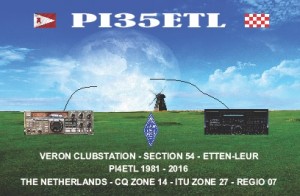 Het Bureau Ondersteuning Antenneplaatsing Nederland, een onderdeel van DKARS, heeft een belangrijk succes geboekt.
Het Bureau Ondersteuning Antenneplaatsing Nederland, een onderdeel van DKARS, heeft een belangrijk succes geboekt.
Na de Vereniging Nederlandse Gemeenten heeft nu ook vereniging van woningcorporaties, AEDES, in samenwerking met de DKARS een document over antenneplaatsing op haar interne netwerk geplaatst. Het AEDES Antenne Factsheet is daarmee voor elke woningbouwvereniging online toegankelijk.
De afgelopen periode heeft onze BOAN-coördinator Jan van Muijlwijk, PA3FXB, druk overleg gevoerd met de juridische dienst van AEDES. Dit heeft uiteindelijk geleid tot het tot stand komen van dit document. Het document leidde direct tot succes, zo meldde Jan afgelopen week.
“Ik kreeg een mail van een woningbouwvereniging waar een zendamateur al meer dan een half jaar mee ‘in de slag was’. Men wilde eerst helemaal niet meewerken aan deze zaak. Het ‘Aedes Factsheet’ heeft hier een postieve invloed op gehad. Vandaag kreeg de betrokken amateur alsnog zijn toestemming binnen om een antenne te kunnen plaatsen!”
In het nieuwe DKARS Magazine, dat rond 8 april zal verschijnen, kunnen geïnteresseerde radiozendamateurs hier meer over lezen en zelf het AEDES Antenne Factsheet downloaden. Wellicht kunnen veel amateurs hier hun voordeel mee doen.
Het BOAN van DKARS verleent gratis hulp bij het verkrijgen van toestemming voor antenneplaatsing. Tientallen amateurs zijn zo de laatste tijd al geholpen met vergunningen en toestemmingen voor het plaatsen van antennes.
Donateurs die een gift van minimaal 25 Euro per jaar bijdragen komen hiervoor in aanmerking. Meer info op de site www.dkars.nl.

 Enkele zendamateurs hebben een nieuwe website ontwikkeld, waarmee online meegeluisterd kan worden met al het verkeer op het BrandMeister (Hytera) DMR-netwerk. Er kan meegeluisterd worden met alle landen en ‘talkgroups’ die beschikbaar zijn: de data komt namelijk rechtstreeks uit de zogenoemde masterserver die het netwerk beheert.
Enkele zendamateurs hebben een nieuwe website ontwikkeld, waarmee online meegeluisterd kan worden met al het verkeer op het BrandMeister (Hytera) DMR-netwerk. Er kan meegeluisterd worden met alle landen en ‘talkgroups’ die beschikbaar zijn: de data komt namelijk rechtstreeks uit de zogenoemde masterserver die het netwerk beheert.
 De VRZA heeft het voornemen om een bijdrage te gaan doen aan de activiteiten van Stichting Scoop Hobbyfonds (
De VRZA heeft het voornemen om een bijdrage te gaan doen aan de activiteiten van Stichting Scoop Hobbyfonds (



